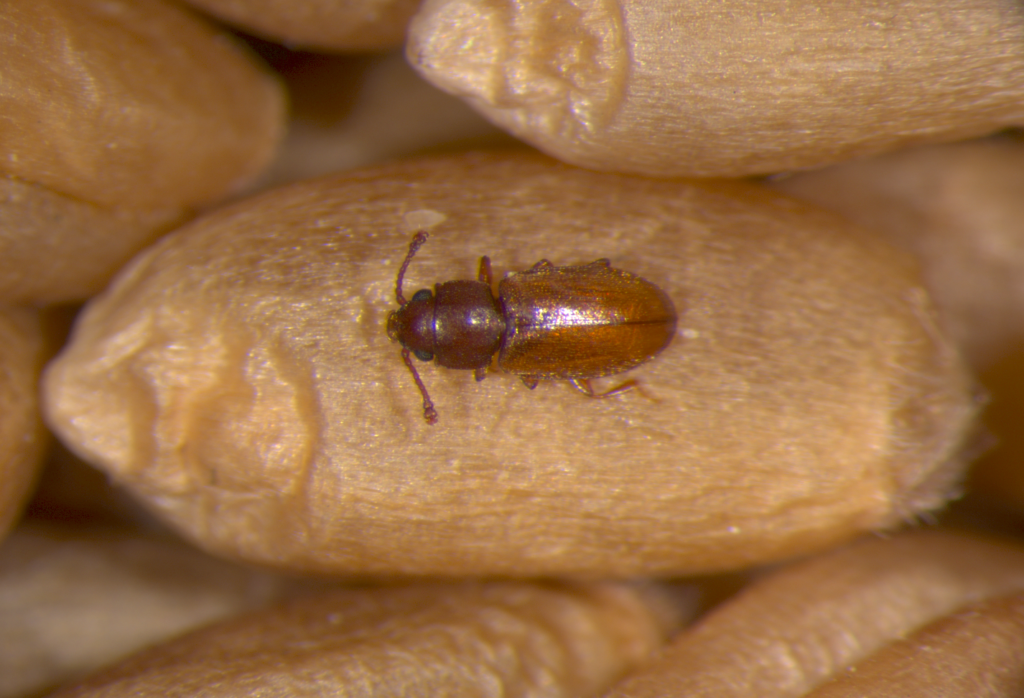The foreign grain beetle (Ahasverus advena) is one of the most commonly encountered insect species in farm-stored grain in Canada. Because it often is found in stored grain, it was thought to be a grain pest, but research has shown that the foreign grain beetle is instead chiefly a mould feeder. Its presence in stored grain tells much about the state of the grain.
Because it feeds on mould, the presence of foreign grain beetles in a grain bin is a telltale sign that grain is likely going out of condition somewhere in the bin. For example, if the grain hasn’t been appropriately aerated it could be that a hot spot is forming in the centre or top of the pile, or, if snow has blown into the bin, the mouldy grain may be restricted to the top of the pile. In many instances, when we encounter foreign grain beetles we cannot readily see mouldy grain, but measuring the grain temperature and moisture content at the very centre of the top of the pile (top of the cone) should show that the condition of the grain is beyond that recommended for safe storage (see link below text) and that grain quality has likely started to deteriorate.

To learn more about current storage practices, storage issues, and to understand the main insect issues in stored grains across the Canadian prairies, Dr. Vincent Hervet with Agriculture and Agri-Food Canada (vincent.hervet@agr.gc.ca) is currently surveying insects in farm grain bins across the Prairie Provinces of Canada. Preliminary results collected over the last two years in Manitoba, predominantly from stored wheat, showed grain insects were present in most bins. To our surprise, most of the insects collected were chiefly mould feeders (61 % of all insects collected in 2020 were mould feeders and 99 % of all insects collected in 2021 were mould feeders), and these mould feeders were present in 72 % of the bins sampled. The most commonly collected insect species was by far the foreign grain beetle.
Different reasons can explain these results, such as precipitations during harvest or weather conditions that did not allow for quick drying and cooling of the grain after harvest, but there may also be a lack of awareness of best storage management techniques. Therefore, we need to continue this research over the next few years to obtain meaningful data. To this end, volunteer growers in Alberta, Saskatchewan, and Manitoba are sought to participate in this survey so we can better understand issues in farm-stored grain and how to address them.
HOW YOU CAN HELP: If you wish to participate in this survey, or if you wish to have more details about the survey, please contact Dr. Vincent Hervet (vincent.hervet@agr.gc.ca; 204-915-6918).
Access these valuable resources provided by the Canadian Grain Commission:
• Review or bookmark these Safe Storage Charts.
• Find more information on the Management of Stored Grain.
